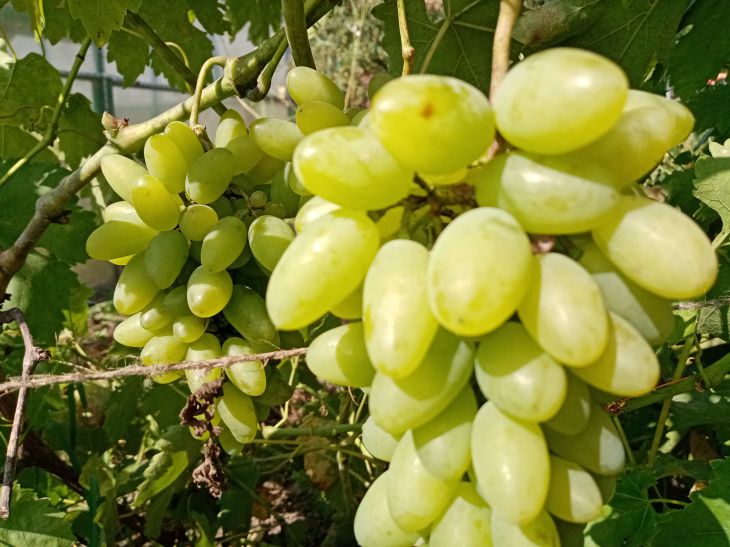Grapes are a noble crop that requires special attention and care. Experienced winegrowers know that the success of the harvest depends not only on proper care, but also on competent neighbors.
Some plants can inhibit grape growth by competing for nutrients and moisture, attracting pests, or creating unfavorable microclimate conditions.
Anastasia Kovrizhnykh , an expert of the online publication "BelNovosti", an agronomist and landscape designer, told how to act in such a situation.
Mistakes in choosing neighbors for grapes can lead to a decrease in yield, weakening of the vine and even death of the plant.
To avoid such problems, it is important to know which plants are absolutely incompatible with grapes and why.

Competition for resources: competing plants
Grapes are a powerful plant with a developed root system. For full growth and fruiting, it requires a significant amount of moisture and nutrients.
Therefore, proximity to plants with similar needs can lead to competition for resources.
One of the main rivals of grapes is the walnut. Its powerful root system secretes juglone, a substance toxic to many plants, including grapes.
Also undesirable neighbors are birch, maple, poplar, chestnut, spruce and other trees with a deep root system.
Among herbaceous plants, grapes can compete with tall cereal crops such as corn, sunflower, and sorghum. Their powerful root system can deplete the soil, leaving the grapes without the necessary nutrients.
Uninvited Guests: Plants That Attract Pests
Some plants, being a magnet for pests, pose a threat to grapes. For example, planting cabbage, radish, horseradish or other cruciferous plants next to grapes can attract the cabbage white butterfly, a butterfly whose caterpillars feed on grape leaves.
It is also not recommended to plant roses near grapes. They are susceptible to attack by aphids, which can easily move to the grape vines.
Unfavorable microclimate: plants that create problems
Plants that create dense shade or impede air circulation should not be planted near grapes. Grapes are a light-loving crop that requires sufficient sunlight.
For example, planting tall sunflowers on the north side of a vineyard can result in shading of the vines and reduced yields.
It is also worth avoiding proximity to plants that contribute to increased air humidity. Excess moisture can provoke the development of fungal diseases that are dangerous for grapes.
Alternatives: Safe Neighbors for Grapes
There are plants that not only do not harm grapes, but can also have a beneficial effect. For example, planting green manure next to grapes, such as phacelia, mustard, lupine, will enrich the soil with nitrogen and other useful substances.
Some types of herbs, such as basil, dill, fennel, and mint, repel pests and improve the taste of grapes.
It is important to remember that the choice of neighboring plants for grapes is an individual process that depends on climatic conditions, soil type and varietal characteristics of the grapes.
Previously we told you how to get rid of spider mites on cucumbers.









